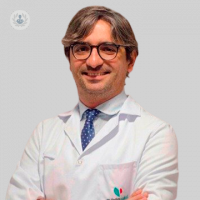Thoracoscopic lung single port surgery without intubation
Written by:The video surgery, a technique of thoracic surgery , significantly improves outcomes compared to traditional surgery and recovery is faster and less painful.
 Thanks to advances in medicine both in the prevention, early diagnosis and new surgical techniques, lung tumors today, and when detected early, can become curable
Thanks to advances in medicine both in the prevention, early diagnosis and new surgical techniques, lung tumors today, and when detected early, can become curable
Lung cancer can be operated in two ways. The classic way is open surgery, also known in which a thoracotomy incision is made about 15-20 cm and the ribs are separated. This approach has a very painful postoperative and today has been replaced by thoracoscopic techniques in many centers.
The less aggressively and offering the best results is the video surgery, also called VATS. It is made from one to three small incisions and operates through video cameras High resolution. By not separating the ribs recovery it is much better.
Our group was a pioneer in the world of video surgery through a single incision, performing the first case in 2010. Since then we have conducted more than 1,000 uniportales procedures and over 600 major procedures with this technique, including very complex cases.
Since 2014 we have gone a step further to reduce the surgical aggression developing lung surgery without intubation with the patient under sedation and maintaining spontaneous ventilation, which is less invasive and less altered immunity. To date we have made over 30 lobectomies using this technique with excellent postoperative results.
The advantages of this new development are manifold. The adverse effects of tracheal intubation and the use of general anesthesia are minimized, such as the trauma associated with intubation, ventilator induced lung injury, neuromuscular blockade, reduced heart function, nausea and vomiting. Moreover, as a minimally invasive technique with a single incision, reduced hospital stay and patient recovery is much faster.
Importantly, the use of this technique also allows to operate on patients whose state of health they can not be given general anesthesia or elderly patients. This new form of intervention is a safe option for them.


